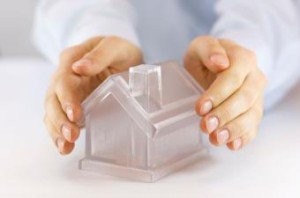 The issues that can result from using plywood to board up a vacant residential property have been well documented over the years, among which are vandalism, violent crime, spreading of community blight, and lowering of property values.
The issues that can result from using plywood to board up a vacant residential property have been well documented over the years, among which are vandalism, violent crime, spreading of community blight, and lowering of property values.
In the last three to five years, a solution to the plywood problem has emerged, and it's clear—literally. Cleveland-based SecureView has used a virtually unbreakable clear polycarbonate board to cover the windows on approximately 15,000 homes in communities across the country and has not had one single break-in, according to SecureView founder and co-chairman Robert Klein.
For many years, Klein's property preservation company, Safeguard Properties, used plywood to secure properties because for the longest time it was the only method available. But the problems with using plywood were obvious—“Plywood shouts out loud that the property is vacant,” Klein said—so a few years ago when one of his partners who is an engineer suggested using polycarbonate to board up one of Klein's commercial properties in Chicago, Klein decided to try it.
“It made a vast difference and we were able to sell the property,” Klein said. “I thought, if we can do this on a commercial property, why can't we used it on a residential property? We did it and it was very successful.”
The rest of the industry is taking notice of the more frequent use of polycarbonate to secure vacant homes. Fannie Mae has been using polycarbonate clearboarding to secure vacant homes since early 2014 and since has installed it in about 4,000 properties. Fannie Mae started using it in four states originally (Illinois, Florida, Ohio, and Michigan) and is looking to expand.
“The use of clearboarding gives off the appearance of a normal window, so the curb appeal is much higher on a clearboarded property versus plywood boarded,” said Jake Williamson, VP, REAM Fulfillment & Operational Analysis at Fannie Mae. “The first thing is the curb appeal. (Polycarbonate) does give off the perspective that it's just a normal home in a market where you're trying to compete with non-distressed sales, that it's just a normal home. The second thing is, it's an incredibly secure product. You can literally throw a cinder block at it and it's not going to shatter or crack.”
“On a number of levels, we feel it's a great product, and a definite step forward in the urban fight against blight for communities.”
Brandon Johnson, CEO, GTJ Consulting
Several municipalities across the country have also taken notice of polycarbonate, and some have even outlawed the use of plywood to board up vacant homes. Last year, Phoenix became one of the first cities to pass such a law. Now the city requires all windows and door openings visible from the street to be secured with polycarbonate if the property has been vacant for 90 days (the previous number was 180).
Phoenix city councilwoman Kate Gallego was instrumental in getting the law passed, telling AZ Central that “When I was campaigning there were certain neighborhoods where people would point to abandoned houses, say, 'What is the city doing about it?' They were unhappy with the standards on how we fixed up properties and how we communicated with residences.”
The cost of polycarbonate, which is about three times that of plywood on average, has been the main reason why some industry participants have been hesitant to commit to using polycarbonate full-time.
“We try to explain that the benefits, in our mind, far outweigh the additional cost, because it's a long-term solution,” said Brandon Johnson, CEO of property preservation company GTJ Consulting in Detroit. “You can't get in, you can't break through it, and it withstands the elements. It doesn't disintegrate over time, and it looks much better, because when you drive by, you can't even tell that the property is boarded up. On a number of levels, we feel it's a great product, and a definite step forward in the urban fight against blight for communities.”
According to Klein, however, the long-term benefits of using polycarbonate make it a more cost-effective solution than plywood despite the greater upfront cost for using polycarbonate.
“It would be less expensive than plywood in the long run, and that's been proven,” Klein said. “The property will not be vandalized, and you will not have to reboard the property over and over again.”
Johnson said his company has been using polycarbonate clearboarding for about five years. “A number of our clients have come to us and said, 'No more plywood at all, just use the polycarbonate.' I think it's just a matter of time before everybody does that.”
Klein believes that between a fast-track foreclosure bill which just passed in Ohio which will cut down the time to complete a foreclosure to about six months and the increased use of clearboarding to secure homes, “It will make a huge difference in protecting communities across the country.”

 DSNews The homepage of the servicing industry
DSNews The homepage of the servicing industry










